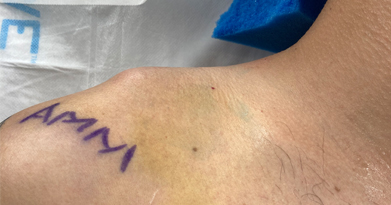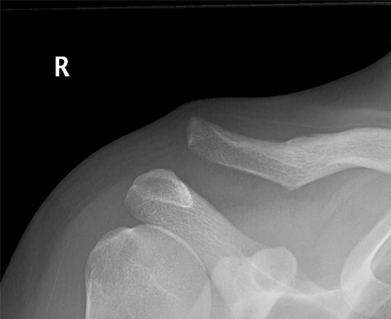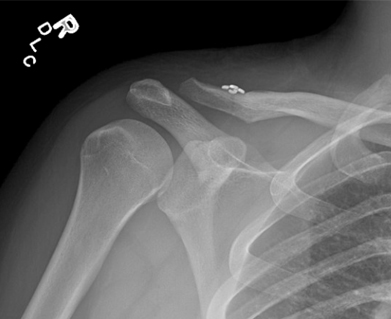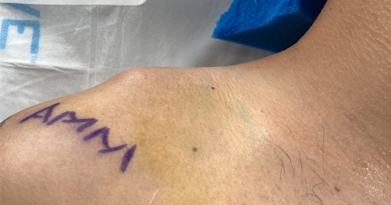Author: Rush Jones, MD
Published on: 11/3/2023
Background
The acromioclavicular (AC) joint is the joint in the shoulder formed by the junction of the acromion, a bony projection of the scapula (shoulder blade) that overlies the shoulder, and the clavicle (collar bone). Overall, the AC joint has limited motion in comparison to many joints, but it does slightly aid in range of motion of the shoulder joint. The AC joint and surrounding ligaments also helps stabilize the shoulder by limiting both vertical and horizontal motion. Injury to the AC joint, also known as a shoulder separation, is typically an injury to the joint itself and surrounding ligaments, which can lead to pain and visual deformity of the shoulder.
Causes of AC joint injury
AC joint injury or a “shoulder separation” is commonly sports or trauma related and involves disruption of the AC joint ligaments or the nearby coracoclavicular (CC) ligaments. These ligaments are typically injured by a direct blow to the shoulder, often the result of a fall onto the shoulder when playing football and other contact sports. This video shows when University of Alabama quarterback Bryce Young injured his AC joint. Dr. Momaya was invited to 3 Man Front on JOX Radio to discuss the injury. Injury to the AC joint is also quite common in traumatic events such as car and motorcycle wrecks or falling from elevated surfaces.
Symptoms of AC joint injury
The two most common symptoms of AC joint injury include pain and visual deformity of the shoulder (Figure 1). Pain is usually located directly over the AC joint with both tenderness to palpation and shoulder movement. Depending on the severity of injury, the shoulder can appear similar to the other side or can have abnormal contouring.

Figure 1
Diagnosis of AC joint injury
AC joint injuries are diagnosed through a combination of the history of injury, physical exam, and radiographic (x-ray) findings (Figure 2). Notice the elevated clavicle in relation to the coracoid. Symptoms consistent with those mentioned above, in combination with abnormal x-ray findings, are typically all that is required to make the diagnosis of AC joint injury.

Figure 2
Treatment of AC joint injuries
Injuries can often be classified into two major categories, those that can be treated conservatively and those that require surgery. This determination is most classically based off the amount of displacement or shift of the bones on the injured side when compared to the uninjured side on x-ray. Although multiple factors are weighed into each individual’s treatment plan, most AC joint injuries with less than 100%, or complete, displacement are treated non-operatively. Conservative treatment commonly involves a combination of brief immobilization in a sling, rest, ice, and physical therapy. Depending on the severity of injury, most people can return to normal activity by 2-3 months.
On the other hand, AC joint injuries with greater than 100% displacement or those with ongoing severe pain following conservative treatment often require surgical treatment in order to restore function and reduce pain in the injured shoulder. Surgery typically involves using a tissue graft, usually from a donor (allograft), to reconstruct the injured CC (coracoclavicular ligament). Strong synthetic suture is often used to augment the reconstruction. Figure 3 shows a picture after ligament reconstruction. Notice the reduced clavicle. After surgery and a few weeks in a sling, physical therapy is initiated with the goal of increasing shoulder range of motion and strengthening the muscles around the shoulder.

Figure 3







